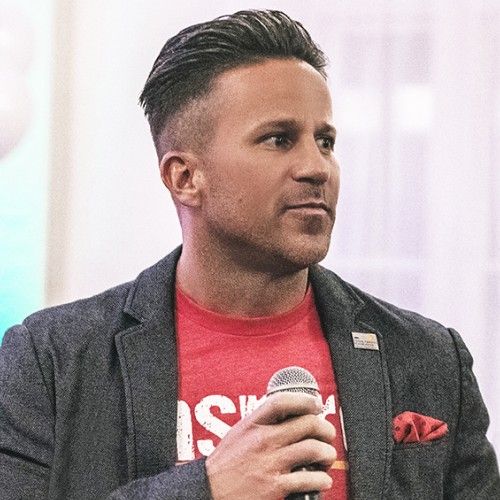Most managers find it challenging to build a perfectly harmonious environment for a team. Accounting for different personality types within groups is critical to creating an environment of success.
Developed in the late 1940s by Donald Fiske as a psychometric tool, the five-factor model of personality traits creates a guide for leaders to better understand dimensions that heavily impact the personal and professional lives of every individual. Commonly, managers will use an online platform to gauge these traits in their direct reports however, grasping the foundation of this model will allow managers to make informed decisions based on observed behavior in the workplace. Managers may gain a better insight into organizational culture, work-life balance, psychological safety, leadership styles, and decision-making processes through an improved understanding of the dimensions within the five-factor personality model.
Using the five-factor personality model, individuals' traits will be measured on five distinct dimensions: extraversion, openness, agreeableness, conscientiousness and neuroticism. To better gauge individuals' on these dimensions, managers should consider utilizing a software or personality test that will provide a better insight into the makeup of a team. Additionally, in constructing a productive work culture, managers may consider a horizontal mentorship program that will expose them to other executives with invaluable experience. Horizontal mentorship will allow executive professionals to better connect with their peers and find innovative solutions for growth and change within a team. With clarity and identification of the five personality dimensions within a group, managers will be able to construct the culture most beneficial for their specific team. Here is how each of the big five personality dimensions impacts the workplace:
- Extraversion
Direct reports ranking high in extraversion are outgoing, warm, and welcoming. These are great traits to improve camaraderie and community within a team. Those who are introverted may prefer to work independently, while extroverted individuals will seek work with others. However, managers should consider the efficiency of highly extroverted individuals who may err on the side of a relationship-oriented mindset. Many consider extraversion to be preferred yet, individuals on either end of this spectrum bring strengths to a team. Additionally, managers should be deliberate in the inclusion of professionals falling in either category. Managers should focus on personally engaging to ensure individuals feel satisfied and valued within a team.
- Openness
Highly open individuals are curious and independent. These individuals can be easily identified by their willingness to try new things and their innovative ideas. Individuals demonstrating high openness will strive in a culture that promotes autonomy. On the other hand, individuals lower on this scale may be more practical and conservative in their thinking. Both are great assets to teams. Those with low openness are generally task-oriented and will ensure a practical completion of a task. In contrast, those with high openness find new and innovative solutions to bring to a group. In considering different levels of openness within a team, leaders should deliberately search for a balance of openness and utilize feedback when implementing changes.
- Agreeableness
Highly agreeable individuals are trusting and compassionate. These individuals are great assets to improve camaraderie and the community feeling within a team. However, managers should be aware that individuals demonstrating high agreeableness may internally struggle with sharing their own opinions and speaking up for themselves. When working with direct reports that demonstrate high agreeableness, managers should focus on asking direct questions and communicating the importance of genuine feedback to these individuals. If an individual demonstrates low agreeableness such as being overly critical or harsh, their personality may detriment psychological safety within a team. To monitor potentially harmful personality types, managers should collect feedback and work with professionals to develop SMART goals in moving forward with a collaborative, productive, and compassionate team.
- Conscientiousness
Highly conscientious individuals are generally well-organized, dependable, and hard-working. These members are an incredible asset to a team and will likely improve efficiency and outputs. However, if a team member exhibits low conscientiousness, they may be more impulsive and flexible. Nevertheless, people with low conscientiousness bring strengths to a team. For example, these individuals may be more creative, outside-of-the-box thinkers and more willing to take risks than those who exhibit high conscientiousness. In working with professionals who demonstrate high conscientiousness, managers should promote a healthy work-life balance. Highly conscientious professionals may struggle with perfectionism, and extreme focus on details and may have a hard time walking away from tasks.
- Neuroticism
Individuals expressing high neuroticism may have a tendency to be easily stressed, overwhelmed, or anxious. With the factor of neuroticism, managers should be deliberate because topics of anxiety and mental health are personal and sensitive in the workplace. Yet, mental health heavily impacts the success of professionals. Although many think it unfavorable, individuals demonstrating high neuroticism bring invaluable strengths to a team. Generally, individuals ranking high in neuroticism are detail-oriented and, have a heightened sense of empathy for others. Additionally, professionals demonstrating high neuroticism have displayed a correlation with an increased motivation to change with feedback, which is an extraordinarily favorable strength in the workplace. Those low on the scale of neuroticism are calm and even-tempered but, may not be as prepared and cautionary as those with high neuroticism. In addressing neuroticism within teams, managers should focus on feedback and the promotion of work-life balance to ensure a healthy environment.
Across the above big five personality traits, each dimension is good in moderation. To develop an outstanding team, managers need to find the balance and ideal work environment that accounts for the team chemistry of the above traits. Managers should carefully consider the big five personality traits when determining project assignments and task prioritization.
Furthermore, the most impactful measure in determining an ideally structured work environment for a team is gathering and analyzing feedback. The best method of utilizing feedback is conducting continuous reviews rather than an annual performance review. For an improvement in the feedback process, managers should consider using software such as AIM Insights that will provide continuous feedback across all levels. In addition to this software, AIM Insights provides executive coaching and tools for SMART goal setting that will drastically improve the growth of teams.



































































